ADDICTION
ALCOHOL DEPENDENCE
QUIT SMOKING
ALLERGY
ANTI FUNGAL
FUNGAL INFECTION
FUNGAL NAIL INFECTIONS
ANTI-REJECTION DRUGS
ANTI WORM
ANTIBIOTIC
BACTERIAL INFECTIONS
ARTHRITIS
GOUT
OSTEOARTHRITIS
RHEUMATOID ARTHRITIS
BLOOD
LOW PLATELET COUNT
THROMBOPHLEBITIS
VARICOSE VEINS
COLON
ANAL FISSURE
PILES
ULCERATIVE COLITIS
DIABETES CARE
DIABETES INSIPIDUS
DIABETES TYPE
DIABETIC FOOT ULCERS
GLUCOSE MONITOR
EYES/EAR CARE
DRY EYES
EYE CARE
EYE EXAMINATION
EYE INFECTION
EYE LASHES
EYE PAIN
GLAUCOMA
OCULAR HYPERTENSION
UVEITIS
FEVER CARE
MALARIA
RHEUMATIC FEVER
TYPHOID FEVER
GASTROINTESTINAL
ACIDITY
CONSTIPATION
CROHN'S DISEASE
DIARRHOEA
GALLBLADDER STONES
INTESTINAL ULCERS
IRRITABLE BOWEL SYNDROME
MOTION SICKNESS
NAUSEA
Aziderm Cream 10% (Azelaic Acid)
| Active Ingredient (Generic Name): | Azelaic Acid |
|---|---|
| Indication: | Acne |
| Manufacturer: | Micro Labs Limited |
| Packaging: | 15 gm in one tube |
| Strength: | 15 gm |
From: $35.00
Have you ever wondered how Aziderm Cream 10% with Azelaic Acid can revolutionize your skincare routine? Its multitasking abilities go beyond just treating acne – from combating rosacea to reducing hyperpigmentation. But what sets this cream apart is not just what it does, but how it does it. The unique way it unclogs pores, fights bacteria, and calms inflammation might just make it your new skincare staple. The question is, are you ready to discover the potential of Aziderm Cream for your skin concerns?
Why is this medication prescribed?
If you have acne or rosacea, Aziderm Cream 10% (Azelaic Acid) may be prescribed to help reduce inflammation and improve skin texture. Azelaic acid works by unclogging pores, reducing bacteria growth, and decreasing inflammation, making it an effective treatment for these skin conditions.
Acne occurs when hair follicles become clogged with oil and dead skin cells, leading to pimples, blackheads, and cysts. Rosacea is a chronic skin condition that causes redness, visible blood vessels, and small, red, pus-filled bumps on the face.
Aziderm Cream 10% helps to alleviate the symptoms of these conditions by targeting the underlying causes. By applying the cream topically, you can directly treat the affected areas, promoting clearer and smoother skin over time. It’s important to follow your healthcare provider’s instructions carefully to achieve the best results and minimize potential side effects.
How should this medicine be used?
To use Aziderm Cream 10% (Azelaic Acid) effectively, apply a thin layer to clean, dry skin once or twice daily as directed by your healthcare provider. Before applying the cream, wash the affected area with a mild cleanser and pat it dry gently. Squeeze a small amount of the cream onto your fingertip and gently massage it into the skin until it’s evenly distributed. Avoid getting the cream in your eyes, mouth, or nostrils. If contact occurs, rinse thoroughly with water.
It’s important to follow your healthcare provider’s instructions carefully to achieve the best results. Don’t apply more cream than recommended, as this won’t speed up the healing process and may increase the risk of side effects. If you forget a dose, apply it as soon as you remember, unless it’s almost time for your next scheduled dose. In that case, skip the missed dose and continue with your regular dosing schedule. If you have any questions or concerns about using Aziderm Cream 10% (Azelaic Acid), consult your healthcare provider for guidance.
Other uses for this medicine
The cream may also be used for purposes not listed in the medication guide. Aziderm Cream 10% containing azelaic acid has shown effectiveness beyond its primary indications. Some dermatologists may prescribe this cream for conditions such as melasma, a common skin problem causing dark patches on the face. Azelaic acid’s ability to inhibit melanin production makes it a potential treatment option for this condition.
Additionally, the cream may be utilized for post-inflammatory hyperpigmentation, a condition where dark spots develop after skin inflammation or injury. Aziderm Cream 10% has also been studied for its anti-inflammatory properties, making it a potential candidate for managing certain types of acne. Some individuals have reported improvement in their acne symptoms with the use of this cream.
However, it’s important to consult a healthcare professional before using Aziderm Cream 10% for these off-label purposes to ensure its safe and appropriate application for your specific skin concerns.
What special precautions should I follow?
When using Aziderm Cream 10%, it’s important to review your medical history before application. This step helps to confirm that there are no contraindications or potential risks associated with the cream.
Taking this precaution can help you use the product safely and effectively.
Check Medical History
Evaluating your medical history before using Aziderm Cream 10% is important to guarantee safe and effective application. Before incorporating this cream into your skincare routine, consider the following precautions:
- Inform your healthcare provider about any existing skin conditions or allergies.
- Disclose any medications, both prescription and over-the-counter, that you’re currently using.
- Mention if you have a history of eczema, asthma, or other skin sensitivities.
Taking these steps will help determine if Aziderm Cream 10% is suitable for you and minimize the risk of any adverse reactions. Your medical history plays a vital role in ensuring the best outcomes when using this product.
What special dietary instructions should I follow?
To optimize the effectiveness of Aziderm Cream 10% (Azelaic Acid), consider incorporating a balanced diet rich in fruits and vegetables. While using Aziderm Cream, it’s advisable to follow a healthy eating plan that includes a variety of nutrient-dense foods. Consuming a diet high in fruits and vegetables can provide essential vitamins, minerals, and antioxidants that support overall skin health and may complement the effects of Azelaic Acid in managing skin conditions.
Additionally, staying hydrated by drinking an adequate amount of water daily is important for skin hydration and overall well-being.
Incorporating foods rich in omega-3 fatty acids, such as fish, walnuts, and flaxseeds, may also be beneficial for skin health. These healthy fats can help reduce inflammation and support skin cell regeneration. Avoiding excessive consumption of processed foods, sugary snacks, and high-fat dairy products may help maintain skin health and support the efficacy of Aziderm Cream.
What should I do if I forget a dose?
In case you forget to apply a dose of Aziderm Cream 10% (Azelaic Acid), apply it as soon as you remember, then continue with your regular application schedule. It’s important to maintain consistency in using the medication to achieve the best results.
However, if it’s near the time for your next scheduled dose, skip the missed application and continue with the next one as planned. Don’t double up on doses to make up for the missed one, as this can increase the risk of side effects without providing additional benefits.
Remember that consistent use of Aziderm Cream is key to its effectiveness in treating your skin condition. If you often forget doses, consider setting reminders or incorporating it into your daily routine to help you remember.
If you have any concerns about missed doses or the application schedule, consult your healthcare provider for guidance.
What side effects can this medication cause?
Aziderm Cream 10% (Azelaic Acid) may cause some side effects that you should be aware of.
It’s important to monitor for persistent symptoms as some side effects can be serious.
If you experience any concerning symptoms, make sure to contact your doctor promptly.
Monitor for Persistent Symptoms
Persistent symptoms from Aziderm Cream 10% (Azelaic Acid) may include skin irritation, dryness, and stinging. If you experience any of these, here are some ways to monitor for persistent symptoms:
- Keep track of any redness, itching, or burning sensation on the skin.
- Watch for excessive dryness or peeling of the skin after using the cream.
- Monitor for any stinging or tingling sensations upon application.
Some side effects can be serious. If you experience any of the following symptoms, call your doctor immediately:
If you develop severe side effects while using Aziderm Cream 10% (Azelaic Acid), promptly contact your healthcare provider. Some side effects can be serious. If you experience any of the following symptoms, call your doctor immediately:
- Severe skin irritation, such as burning, stinging, or itching
- Allergic reactions like rash, hives, swelling of the face, lips, or throat
- Worsening of your skin condition, with increased redness, peeling, or dryness
It is essential to monitor your body’s response to the medication and seek medical advice if you encounter any of these symptoms. Your healthcare provider can provide guidance on how to manage these side effects and adjust your treatment plan accordingly.
What should I know about the storage and disposal of this medication?
When storing Aziderm Cream 10% (Azelaic Acid), make sure to keep it in a cool, dry place away from direct sunlight. It’s important to store this medication at room temperature between 68-77 degrees Fahrenheit (20-25 degrees Celsius). Avoid exposing the cream to extreme heat or cold temperatures, as this can affect its effectiveness. Keep the tube tightly closed when not in use to ensure prevent any contamination or drying out of the cream.
When it comes to disposal, it’s recommended to follow specific guidelines to guarantee the safe and proper disposal of Aziderm Cream. Don’t flush this medication down the toilet or pour it down the drain unless instructed to do so. Instead, consult with your pharmacist or local waste disposal company on the correct way to dispose of unused or expired medications. This helps in protecting the environment and prevents accidental ingestion by children or pets. If you have any questions regarding the storage or disposal of Aziderm Cream, don’t hesitate to seek guidance from your healthcare provider or pharmacist.
In case of an emergency/overdose
In an emergency or overdose situation involving Aziderm Cream 10% (Azelaic Acid), promptly contact poison control or seek immediate medical attention. If someone has ingested Aziderm Cream or applied it excessively on their skin, it’s important to act quickly. Symptoms of an overdose may include severe skin irritation, redness, or swelling, as well as dizziness, difficulty breathing, or changes in consciousness.
When contacting medical professionals, provide details such as the amount used, the strength of the cream, and the time of application. Don’t induce vomiting unless instructed by healthcare providers. It’s essential to keep the product packaging or container with you to provide necessary information.
Emergency responders and healthcare professionals will assess the situation and provide appropriate treatment. Remember that quick action can help mitigate any potential risks or complications associated with an overdose of Aziderm Cream 10% (Azelaic Acid).
What other information should I know?
To guarantee safe and effective use of Aziderm Cream 10% (Azelaic Acid), it’s important to comprehend additional information about this medication. Before using Aziderm Cream, inform your healthcare provider about any allergies, medical conditions, or medications you’re currently taking, including prescription and over-the-counter drugs.
It’s essential to follow the instructions provided by your doctor or the medication label carefully. Avoid getting Aziderm Cream in your eyes, mouth, or nose, and wash these areas thoroughly if accidental contact occurs. Additionally, it’s advisable to apply sunscreen or wear protective clothing to shield treated areas from direct sunlight, as Azelaic Acid may increase skin sensitivity.
If you experience severe skin irritation, swelling, or other unexpected reactions while using Aziderm Cream, contact your healthcare provider promptly. Remember to store the cream at room temperature, away from moisture and heat, and keep it out of reach of children to prevent accidental ingestion.
Brand names
Explore the various brand names under which Aziderm Cream 10% (Azelaic Acid) is available for purchase. Azelaic Acid, the active ingredient in Aziderm Cream 10%, can be found under different brand names depending on the manufacturer. Below is a table listing some of the common brand names of Azelaic Acid creams:
| Brand Name | Manufacturer |
|---|---|
| Aziderm | Micro Labs Ltd. |
| Finacea | Bayer HealthCare |
| Azelex | Allergan |
| Skinoren | Bayer HealthCare |
| Azelaic Acid Cream | Various manufacturers |
Each of these brands may have slight variations in formulation, consistency, or additional ingredients. It is essential to consult with a healthcare professional or pharmacist to determine the most suitable brand of Azelaic Acid cream based on your skin type and specific needs. Remember to follow the instructions provided by the manufacturer or your healthcare provider for the best results.
Purchase Locations and Availability
Having identified the various brand names of Azelaic Acid creams, you can now easily locate Aziderm Cream 10% (Azelaic Acid) at different purchase locations and assess its availability.
Aziderm Cream 10% can be purchased both online and in physical stores. Online platforms like pharmacies’ websites, e-commerce websites, and online skincare stores often offer Aziderm Cream 10% for purchase. When buying online, make sure to verify the credibility of the seller and check for secure payment options.
Additionally, Aziderm Cream 10% may be available at local pharmacies, dermatology clinics, or skincare specialty stores. It’s advisable to call ahead to confirm the cream’s availability before visiting a physical store. Some regions or countries may require a prescription to purchase Aziderm Cream 10%, so it’s crucial to check the local regulations.
To summarise
To conclude, grasping the purchase locations and availability of Aziderm Cream 10% is crucial for easily acquiring this product for your skincare routine. Aziderm Cream 10% containing azelaic acid can typically be obtained both online and in physical stores. Numerous online retailers and e-commerce platforms offer Aziderm Cream 10%, making it convenient for you to purchase from the comfort of your home.
Additionally, many brick-and-mortar pharmacies and skincare clinics stock this product, allowing you to physically browse and purchase it in person. When considering purchasing Aziderm Cream 10%, it’s advisable to check the credibility and reputation of the seller to make sure you’re getting a genuine product. Some popular online retailers where you may find Aziderm Cream 10% include major e-commerce websites, specialized skincare stores, and the official websites of skincare brands.


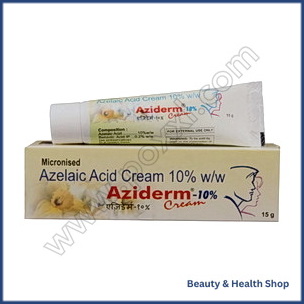
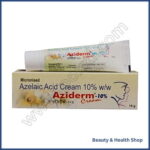
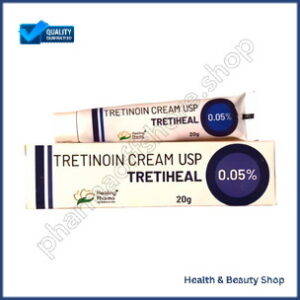
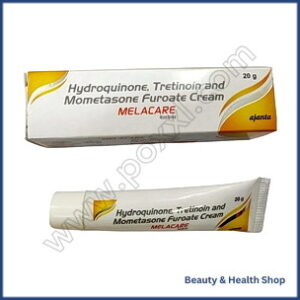
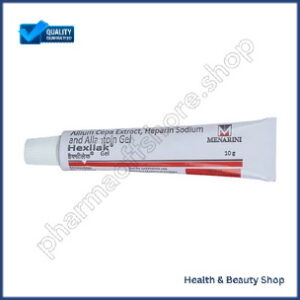
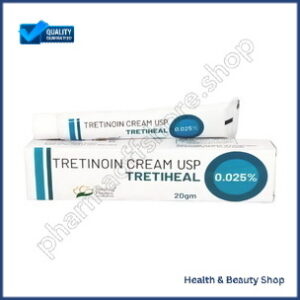
There are no reviews yet.